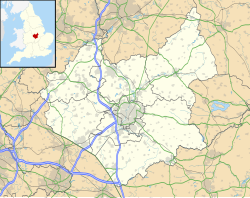| Withcote | |
|---|---|
 | |
Location within Leicestershire | |
| Civil parish |
|
| District | |
| Shire county | |
| Region | |
| Country | England |
| Sovereign state | United Kingdom |
| Post town | Oakham |
| Postcode district | LE15 |
| Police | Leicestershire |
| Fire | Leicestershire |
| Ambulance | East Midlands |
| UK Parliament | |
Withcote is a small parish currently comprising a number of scattered dwellings in Harborough, a local government district of Leicestershire. The population is included in the civil parish of Braunston-in-Rutland.


